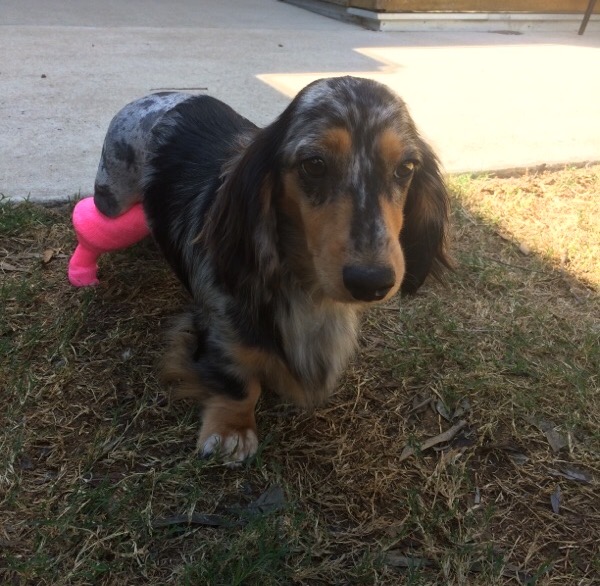The most common ALD (Angular limb deformity) in Dachshunds is pes varus which rarely has a trauma-related pathology and is therefore believed to have an autosomal recessive mode of inheritance with no current genetic test available to identify carriers. Therefore, it is important that breeders consider ALDs within their breeding program and breed away from known carriers to reduce the incidence of pes varus. Owners should also seriously consider pet insurance or have the capacity to self-fund to avoid financial stress as the appearance of this disease is becoming all too common.
ALDs range from mild to severe and can be unilateral or bilateral, meaning they can occur in one or both legs.
Pes Varus
Affecting Rear Legs
Pes Varus (Inward Foot): Also known as bowlegged syndrome or angular hock deformity, pes varus causes “toeing in” due to one or both hind legs turning inward
Pes Valgus (Outward Foot): Referred to as easty-westy, pes valgus is “toeing out” related to one or both hind legs turning outward
Carpal Valgus
Affecting Front Legs
Carpal Varus (Inward Foot): Like pes varus, carpal varus is “toeing in” caused by one or both front legs turning inward
Carpal Valgus (Outward Foot): Called a Queen Anne front or easty-westy, carpal valgus is “toeing out” due to one or both front legs turning outward
Surgery to correct pes varus and ALDs can be performed. In severe cases without surgery, osteoarthritis is inevitable, and dogs may have problems with corresponding joints such as joint incongruity and instability. Unfortunately, the procedure, which averages around $5000 (est.) per leg but varies based on the geographical location, is cost-prohibitive to some owners.
Want to know more about Pes Varus? Check out these helpful links.
Acknowledgements:
- Dachshund Health UK
- Audrey Rose – Graphics & Photos – Bi Lateral Pes Varus & IVDD Survivor
- Read Audrey’s Story
Luxating patella
A luxating patella is a common condition in dogs but is especially prevalent in small breeds like Dachshunds. It usually becomes noticeable around 4-6 months of age, and it’s often a congenital defect. Dachshunds have a predisposition for luxating patella, and it can normally be diagnosed and treated early on.
Want to know more about Luxating Patella? Check out these helpful links.
Acknowledgements:
X-Rays

Pes Varus Dachshund Right Rear

Pes Varus Dachshund Left Rear

Pes Varus Dachshund Bi Lateral

Pes Varus Dachshund After Surgery

Before Surgery

After Surgery

After Surgery
